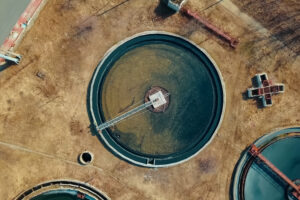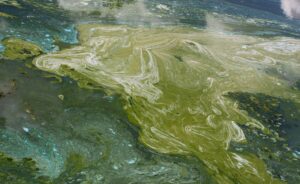FAQs & Information
Program Frequently Asked Questions and Information
Program FAQs
General FAQs
The Program provides residents and homeowners with an affordable solution for complying with federal, state, and local government regulations and laws that require private property owners to maintain and repair buried sewer pipes (laterals) that leak, crack and create environmental hazards and contamination. The Private Sewer Lateral Program provides governments with a program to comply with the Clean Water Act by reducing excess sewage flows that cause sanitary sewer overflows, beach closures and public health risks.
Over time, private property sewer laterals reach their life expectancy, break/fail, become dis-jointed or displaced, and are vulnerable to intrusion by tree roots, causing leaks and blockages. Repairing or replacing a sewer lateral is a very costly process. Because these pipes are typically not covered under homeowner’s insurance, the cost comes from out-of-pocket funds, typically more than $7,500. Infiltration and exfiltration are terms used in the wastewater industry to describe the flow of raw sewage into the ground and into broken sewer laterals that cause pollution and contamination of streams, tributaries, and large waterbodies.
There is an annual enrollment period, in which residents are given the opportunity to join or opt-out of the program. Following the enrollment, participants can then call Pipelogix LMS Inc., when they experience an issue with their private sewer lateral.
Those residents and property owners who were unable to enroll, or those who opted-out of the program the previous year, will have the ability to enroll during the following year’s enrollment period.
Residents will be protected from the unexpected costs of repairing or replacing their sewer lateral. The cost of such repairs or replacements can be substantial and is otherwise the responsibility of the homeowner. Residents enrolled in the program will also be helping to protect the environment by addressing defective private property wastewater infrastructure.
Wastewater that leaks out of broken sewer lateral contaminates the groundwater. The infiltration of rainwater into broken sewer laterals increases flow into the wastewater collection system and overburdens the treatment facility. This causes sanitary sewer overflows which spill raw, untreated sewage directly into surrounding water bodies.
There are several indicators that would suggest there is an issue with your private sewer lateral, including:
- Sewage backup in the lateral cleanout or trap (typically in your basement or lowest level)
- Toilet/sink/shower not draining properly
- Sink hole or collapsed/saturated lawn
- Foul odors around your property
Call the municipality’s vendor, Pipelogix LMS, at 1-800-926- 7910 or contact us here.
Call the municipality’s vendor, Pipelogix LMS, at 1-800-926-7910. You will explain the trouble you are experiencing, and a technician will be dispatched to your location to inspect the lateral and identify the issue. Once the problem is identified, necessary repairs will be made.
Information
Wastewater Collection System
 Wastewater collection is a system of pipes and drains designed to transport wastewater from homes and businesses to treatment plants for sanitation and re-use. The collection system is split between public and private property. Maintenance of pipes and drains under the street are the responsibility of the municipality or utility operating the collection system. The pipes connecting homes and businesses to the collection system, commonly called sewer laterals, are required to be maintained and repaired by the property owner.
Wastewater collection is a system of pipes and drains designed to transport wastewater from homes and businesses to treatment plants for sanitation and re-use. The collection system is split between public and private property. Maintenance of pipes and drains under the street are the responsibility of the municipality or utility operating the collection system. The pipes connecting homes and businesses to the collection system, commonly called sewer laterals, are required to be maintained and repaired by the property owner. To have an efficient and effective wastewater collection system it must sealed on both the public and private side. It is easier for municipalities or utilities to maintain the public side. It is a matter of identifying an issue and utilizing their resources to fix the problem. Private property sewer laterals are neglected resulting from a lack of awareness and public education. The cost for private property owners to fix sewer laterals is high and most people cannot afford the repairs. This leads to a neglect of half of the collection system which leads to sanitary sewer overflows, backups, and environmental contamination.
Environmental Issues
Aging, dilapidated, and neglected wastewater collection systems threaten our local environment through contamination and destabilization of habitats.
Sea rise has been steadily increasing over the past century and will begin to threaten our day to day lives. Studies have predicted that by 2100 on the east coast sea level will rise as much as 6 feet. Considering most coastal communities sit 3 feet above high tide levels, this sort of sea rise will destroy our communities.
As sea levels rise, groundwater rises as well. In coastal communities, underground utilities are situated only a few feet underground. We are already experiencing groundwater levels during high tides and full moons covering our underground utilities causing issues. A rise in the groundwater level will expose our wastewater collection system to frequent submersion where that water will infiltrate and inundate the system. We will not be able to use our toilets, showers, and drains because the system will be at capacity more frequently. Repairing and sealing the sewer system is the only way to prepare for the inevitable rise in groundwater levels.
Sanitary Sewer Overflows (SSO’s) occur when the flows entering a wastewater treatment plant exceed the capacity of the plant. Overflow measures are taken which discharges both treated and untreated wastewater directly into local waterways. Increased flows leading to sanitary sewer overflows typically occur during wet weather events. A major contributor to these excess flows is clean water infiltrating the wastewater collection system through breaks and cracks in sewer pipes and drains.
When a sanitary sewer overflow occurs, it is common to see beach closures and restrictions on local waterways. The possibility for contamination caused by both untreated and partially treated wastewater poses a threat to humans.
SSO’s can also be caused by Defective Pipelines, excessive sedimentation and blockages caused by Roots, grease, etc, creating the same condition of I/I entering the wastewater collection system, a lack of available capacity to carry wastewater to the Treatment plants. SSO’s are not just caused by infiltration into the system.
Public Health Hazards
 Sewage discharges of any kind have a negative impact on the quality of the receiving waterbody. In most cases, wastewater does not come into direct contact with drinking water, since even the earliest sewer system outfalls were located far from drinking water intakes, but contaminants may still have the potential to affect drinking water systems downstream or have other indirect effects. A period of wet weather can also make a river, stream, lake or shoreline unfit for swimming or fishing, and if it is bad enough, the odor can be unpleasant, potentially affecting nearby residences and businesses.
Sewage discharges of any kind have a negative impact on the quality of the receiving waterbody. In most cases, wastewater does not come into direct contact with drinking water, since even the earliest sewer system outfalls were located far from drinking water intakes, but contaminants may still have the potential to affect drinking water systems downstream or have other indirect effects. A period of wet weather can also make a river, stream, lake or shoreline unfit for swimming or fishing, and if it is bad enough, the odor can be unpleasant, potentially affecting nearby residences and businesses.
The release of sewage and collected runoff can also have negative effects on the environmental health of the receiving waterbody and its ecosystem, as it increases the nutrient density of the water. Harmful algal blooms are overgrowths of algae in nutrient-rich water. They can produce dangerous toxins that sicken people, kill animals, create dead zones in the waterbody and harm local economies They also raise treatment costs for drinking water, and even then, treatment may not produce desired results.
Compliance
 The Clean Water Act established guidelines and regulations to protect and preserve our nations waters. This legislation holds both governments and citizens responsible for preventing sources of contamination and pollution to our waters. Penalties for non-compliance can be severe. Understand your responsibilities under the Clean Water Act helps minimize the risk of non-compliance and facing penalties while helping protect our environment.
The Clean Water Act established guidelines and regulations to protect and preserve our nations waters. This legislation holds both governments and citizens responsible for preventing sources of contamination and pollution to our waters. Penalties for non-compliance can be severe. Understand your responsibilities under the Clean Water Act helps minimize the risk of non-compliance and facing penalties while helping protect our environment.
In addition, many states have their own guidelines and laws regarding the protection of water. These regulations are specific to each state and their characteristics which may differ from the specifics in the Clean Water Act.
We study these laws and monitor the development of new and changing laws. We can guide you to keep you in compliance and avoid violations.